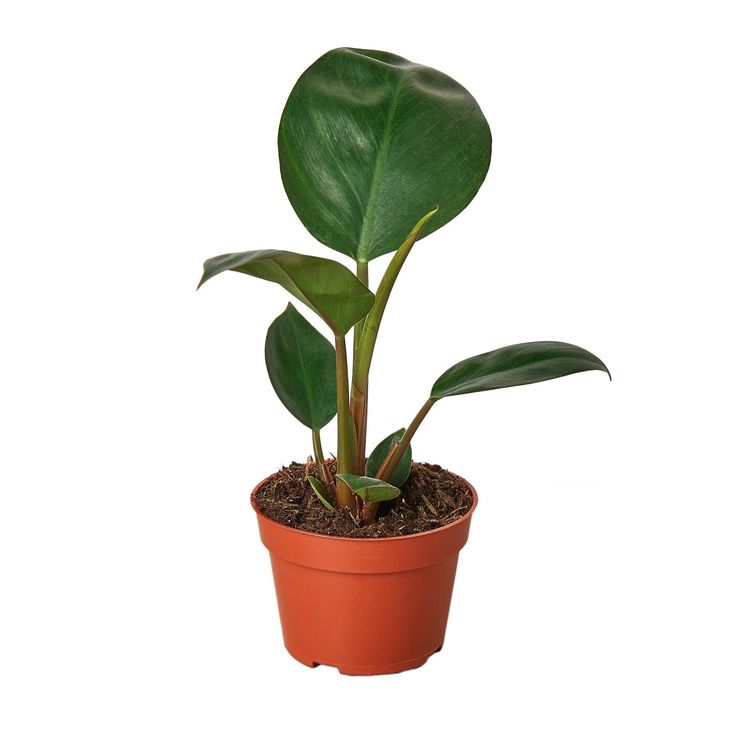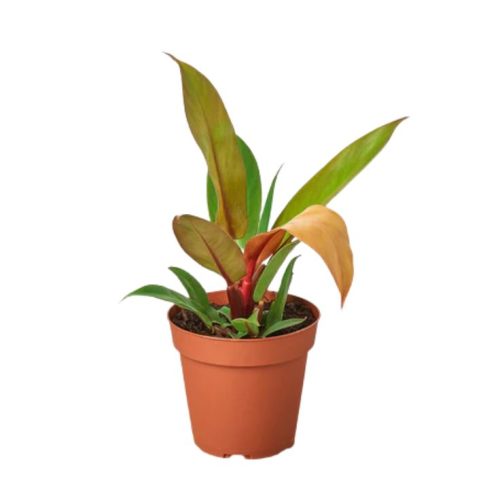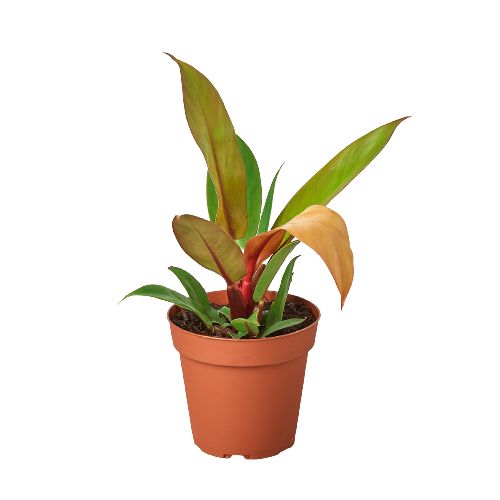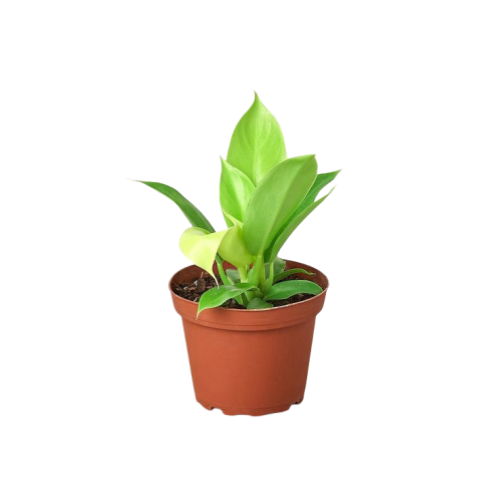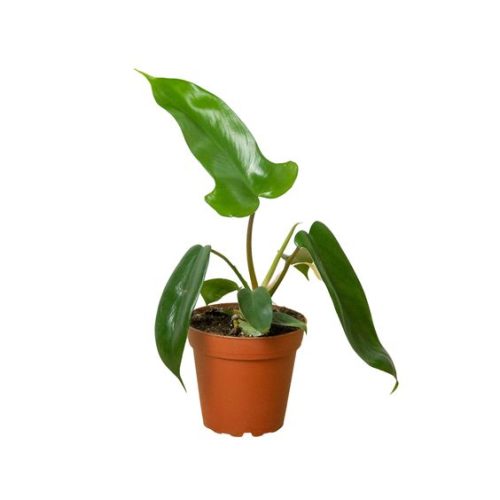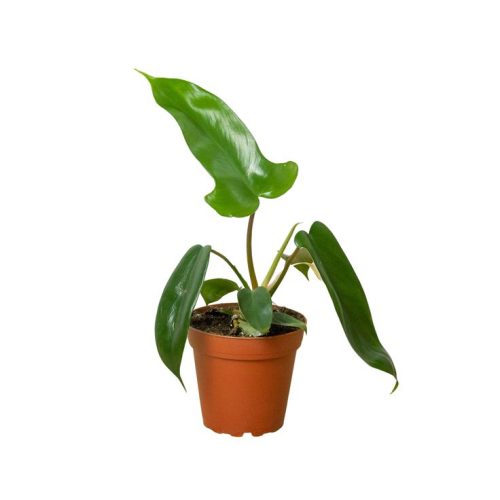Philodendron Ring Of Fire Gold
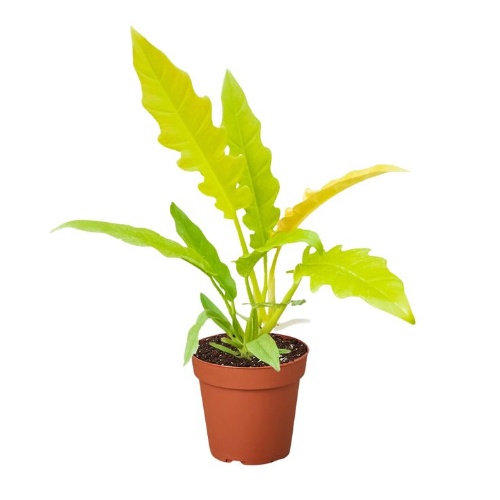
- Botanical Name: Philodendron ‘Ring of Fire’
- Family Name: Araceae
- Stems: 1-3 Feet
- Temperature: 10℃~30℃
- Others: Crawling, climbing, light-loving.
Overview
Product Description
Philodendron Ring Of Fire Gold: Tropical Triumph of Color and Climb
Philodendron Ring of Fire Gold: The Majestic Tropical Climber
Tropical Beauty
Philodendron Ring of Fire Gold, also known as Fire Ring Philodendron, belongs to the Araceae family and the genus Philodendron. This plant is native to the tropical rainforests of South America and is a hybrid offspring of Philodendron Wendlandii and Philodendron Tortum. Characterized by its creeping but non-spreading growth habit, it typically grows horizontally on the forest floor in rainforests.
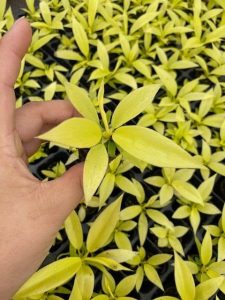
Philodendron Ring of Fire Gold
Care and Conditions
The growth habits of Fire Ring Philodendron include specific requirements for light, humidity, temperature, and soil. It prefers bright, indirect light to avoid sunburn on its leaves. The ideal growing temperature ranges from 15-28°C, with humidity maintained between 60-80%. This plant requires well-draining soil rich in organic matter with a pH level between 6.1 and 6.5.
Vertical Elegance
In terms of water management, Philodendron Ring Of Fire Gold needs evenly moist soil but not overly wet to prevent root rot. Watering should be done when the top inch of soil is dry. Additionally, Fire Ring Philodendron has the ability to climb, with aerial roots that can attach to various surfaces, allowing it to grow vertically. With proper support, such as a moss pole or trellis, it can create an impressive vertical display in any indoor or outdoor space.
A Spectrum of Beauty
Another notable feature of Fire Ring Philodendron is the change in leaf color as it matures. Young leaves typically display a bright fire-red color, which transitions to a rich green as they mature. This unique growth habit and vibrant leaf color make it a popular choice for indoor decoration, beloved by plant enthusiasts.
The Philodendron Ring of Fire Gold: A Botanical Fireworks Show of Foliage and Fun!
Flame Leaves
Philodendron Ring Of Fire Gold boasts leaves that are among its most striking features. These heart-shaped or broadly ovate leaves have smooth edges, a thick texture, and a glossy surface that makes them particularly eye-catching under light. Most notably, the vibrant fire-red color of the young leaves gradually transitions to a deep green as they mature, adding a dynamic visual effect to the plant and making it a focal point in indoor decoration.
Textured Veins
The prominent veins of the Fire Ring Philodendron add a sense of texture to the leaves. These veins are not only visually appealing but also crucial for the plant’s growth and health, as they are responsible for the transport of water and nutrients. This unique vein pattern makes each leaf resemble a meticulously crafted piece of art, showcasing the fine craftsmanship of nature.
Climbing Roots
The stems of the Fire Ring Philodendron are typically green with brown or red spots that become more pronounced as the plant grows. Its aerial roots are well-developed, allowing it to attach to various surfaces, enabling the plant to climb and anchor itself to supports such as trees or walls. This growth habit allows it to spread either creepingly or climbingly, demonstrating the power and flexibility of plant growth, making it a versatile choice in horticulture.
Philodendron Ring Of Fire Gold: Nature’s Colorful Mood Swings
The leaf color change of Philodendron ‘Ring of Fire Gold’ is a result of the combined effects of various factors. First and foremost, the composition and ratio of pigments in the leaves play a key role, including chlorophyll, carotenoids, and anthocyanins. The different amounts and ratios of these pigments determine the color display of the leaves.
Secondly, environmental factors such as variations in light, temperature, and water also impact the synthesis and degradation of pigments. For example, in the low temperatures of the fall and winter seasons, an increase in the content of soluble sugars can lead to a significant synthesis of anthocyanins, causing the leaves to show a bright red color.
Moreover, when plants face adversity, chlorophyll gradually decomposes while the production of anthocyanins increases, which is also the plant’s adaptive response to environmental changes. Thus, this color transformation is a natural consequence of the dynamic equilibrium of pigments within the plant, the impact of environmental conditions, and the plant’s growth status.





